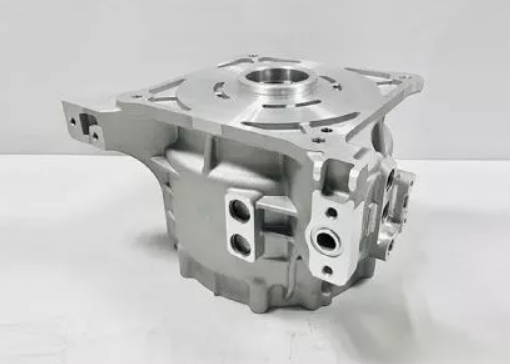Casting is widely used to produce various components in automotive industry, here we want to introduce common automobile parts made by die casting and popular materials used.

What are Automotive Castings?
Automotive castings are metal components that are produced by casting processes and are used in the manufacturing of automobiles. These castings can be made from a variety of metals including iron, aluminum, and magnesium. The casting process involves pouring molten metal into a mold and allowing it to cool and solidify into the desired shape. The mold can be made of sand, ceramic, or metal depending on the type of casting being produced.
Automotive castings can be used in a wide range of applications including engine blocks, cylinder heads, transmission cases, brake calipers, suspension components, and more. These castings are often designed to be strong, durable, and lightweight to help improve the performance and fuel efficiency of vehicles.
What Automobile Parts are Made by Die Casting?
Die casting is a popular method for producing various automobile parts due to its ability to create complex shapes and its high production efficiency. Here are some examples of automobile parts that are commonly made using die casting:
– Engine Parts: The engine is one of the most complex and essential components of a car. Die casting is commonly used for producing engine parts such as engine blocks, cylinder heads, and crankcases.
– Transmission Parts: The transmission system of a car is responsible for transferring power from the engine to the wheels. Transmission housings, gears, and clutch housings are commonly produced using die casting.
– Suspension Parts: The suspension system is responsible for providing a smooth ride, handling, and stability to the vehicle. Die casting is also used for producing suspension components such as steering knuckles, control arms, and brackets.
– Brake Parts: The braking system is crucial for the safety of a vehicle. Brake components such as calipers and wheel cylinders can be produced using die casting.
– Electrical Components: Die casting is often used for producing electrical components such as alternator housings and starter motor housings.
The specific parts that are produced using die casting may vary depending on the requirements of the vehicle and the manufacturing process used by the automaker.
Materials of Automotive Castings
Automotive castings can be made from various metals and alloys depending on the specific application and requirements of the component. Here are some of the most commonly used materials for automotive castings:
– Gray Iron: Gray iron is a type of iron alloy that is commonly used for producing automotive components such as engine blocks, cylinder heads, and brake drums due to its excellent thermal conductivity, wear resistance, and low cost.
– Aluminum: Aluminum and its alloys are widely used for producing lightweight automotive components such as cylinder heads, transmission cases, and suspension parts. Aluminum castings offer high strength-to-weight ratios, excellent corrosion resistance, and good heat dissipation.
– Magnesium: Magnesium is another lightweight metal that is commonly used for producing automotive castings. Magnesium castings are typically used for producing transmission cases, steering wheels, and other lightweight components that require high strength and stiffness.
– Zinc: Zinc is a low-cost metal that is commonly used for producing small automotive components such as door handles, locks, and other trim pieces.
– Steel: Steel castings are used for producing automotive components that require high strength and wear resistance such as gears and other transmission components.

